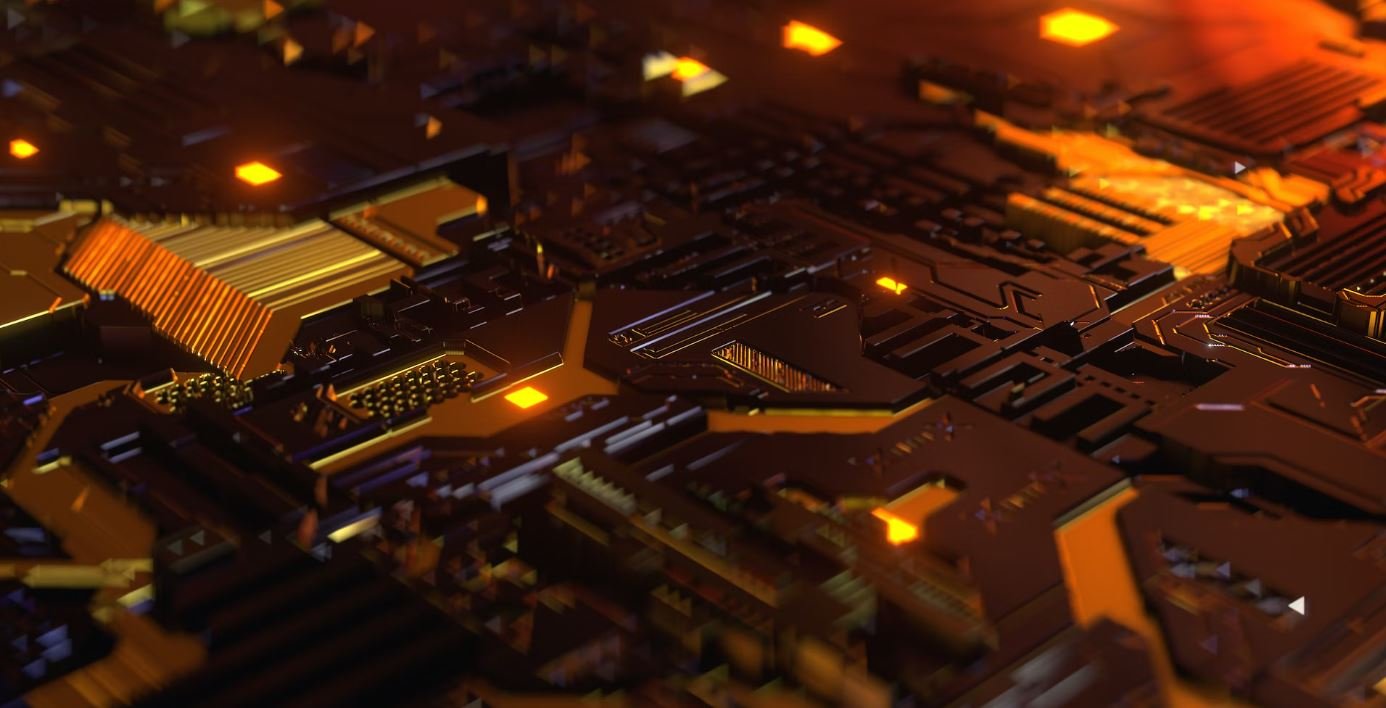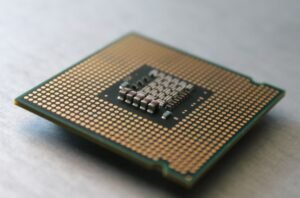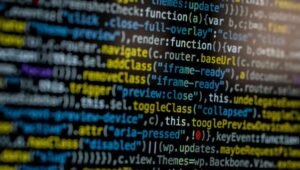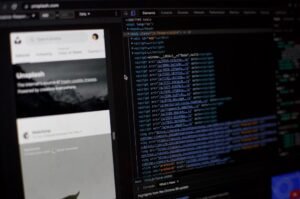Deepfake AI Tool: Photo Editor
Modern technology has paved the way for various advancements, including the development of deepfake AI tools that allow individuals to manipulate photos and create convincing fake images. These tools utilize artificial intelligence algorithms to alter facial expressions, change appearances, and transform images seamlessly. The rise of deepfake AI technology raises concerns about ethical implications and its potential for misuse.
Key Takeaways:
- Deepfake AI tools use advanced algorithms to manipulate photos and create convincing fake images.
- These tools raise concerns about ethical implications and the potential for misuse
- Increased awareness and detection methods are crucial in identifying and combating deepfake content.
Deepfake AI tools utilize sophisticated algorithms to manipulate images. By utilizing artificial neural networks, these tools can automatically learn and replicate the style, features, and expressions of a person in an existing photo. This allows individuals to alter images in various ways, making it appear as though they are saying or doing things they never did.
*Deepfake AI tools enable users to create fake images that are incredibly realistic, posing challenges in differentiating between genuine and manipulated content.
Understanding Deepfake AI Technology
Deepfake AI tools are built upon two key technologies: face swapping and generative adversarial networks (GANs). Face swapping involves replacing the face of a person in an original image with the face of another individual, usually through the use of a reference photo. GANs, on the other hand, are composed of two neural networks—a generator and a discriminator—that work together to produce realistic images by constantly improving and refining each other’s output.
The Ethical Concerns
The rise of deepfake AI tools raises significant ethical concerns. Misleading and manipulated content can have serious consequences, including reputation damage, misinformation, and potential threats to national security. The ability to create convincing fake images and videos presents a challenge when it comes to validating the authenticity of visual content.
While entertainment purposes such as swapping faces in videos or creating realistic avatars are harmless in nature, the implications of malicious use of the technology are worrisome. It is essential to address the potential risks associated with deepfake AI tools and develop methods to detect and combat the spread of manipulated content.
Identifying Deepfake Content
Given the advancements in deepfake AI technology, it is crucial to develop effective methods for identifying and combating manipulated content. Various techniques, including forensic analysis, metadata examination, and facial inconsistencies, can be utilized to detect potential deepfake images or videos.
*Staying vigilant and employing critical thinking while consuming media is important in navigating the world of deepfake content.
Countermeasures and Detection Tools
Multiple organizations and researchers are actively working on developing countermeasures and detection tools to combat the spread of deepfake content. These range from AI-based algorithms that analyze facial movements and inconsistencies to machine learning models that can spot subtle anomalies in manipulated media.
It is crucial to raise awareness about the existence of deepfake technology and its potential consequences. By increasing knowledge and implementing robust detection methods, society can be better equipped to identify and prevent the misuse of deepfake AI tools.
Conclusion
While deepfake AI tools offer exciting possibilities for creativity and entertainment, their potential for misuse poses significant ethical concerns. It is essential for individuals, organizations, and technology experts to work together in developing effective detection methods and strategies to combat the spread of manipulated content.

Common Misconceptions
Misconception 1: Deepfake AI is only used for creating fake videos
One common misconception about deepfake AI tools is that they are only used to create fake videos. While deepfake technology is indeed known for its ability to manipulate videos, it can also be used to create fake images and audio. It is important to note that deepfake AI tools have various applications and can be used for both harmless fun, like creating entertaining content, as well as malicious purposes, such as spreading misinformation or creating counterfeit material.
- Deepfake AI can manipulate images to create realistic-looking fake pictures.
- Deepfake AI can generate synthetic voices that sound like real people, making it difficult to authenticate audio recordings.
- It is crucial to be cautious when encountering suspicious media content that may have been created using deepfake AI.
Misconception 2: Deepfake AI tools are easy to detect
Another misconception is that it is easy to spot deepfake AI-created content. While there are certain indicators that can help in detecting deepfakes, such as inconsistencies in facial movements or audio sync, the technology behind deepfakes is continuously evolving. This means that deepfake AI tools are becoming more sophisticated, making it increasingly challenging to distinguish between real and fake content.
- Deepfake AI tools are constantly improving their ability to create more convincing fakes.
- The lack of clear indicators does not guarantee that a piece of media is authentic.
- Experts and researchers are continuously working on developing better methods to detect deepfakes.
Misconception 3: Deepfake AI tools are only used for malicious purposes
There is a misconception that deepfake AI tools are solely used for malicious purposes, such as spreading fake news or creating revenge porn. While deepfake technology has indeed been misused in such ways, it also has legitimate uses. For example, it can be used in the film industry for visual effects or to create lifelike characters in video games. It is important to consider the intent behind the use of deepfake AI before assuming its sole purpose is malicious.
- Deepfake AI has legitimate uses in the entertainment industry.
- It can be used for educational purposes to simulate historical events or create interactive learning experiences.
- Deepfake AI has the potential to revolutionize the field of virtual reality.
Misconception 4: Deepfake AI tools are only accessible to experts
Many people believe that deepfake AI tools are highly complex and can only be operated by experts in the field. However, with the advancement of technology, deepfake AI tools have become more accessible to the general public. There are now user-friendly deepfake AI software and mobile applications available, requiring minimal technical knowledge to operate.
- Deepfake AI tools are now available in user-friendly software and applications.
- Some deepfake AI tools can be accessed online without the need for installation.
- Although accessibility has increased, ethical use and awareness of potential misuse are still essential.
Misconception 5: Deepfake AI tools are illegal
There is a common misconception that using deepfake AI tools is illegal. The legality of deepfakes varies depending on the jurisdiction and the intended use. While some uses of deepfake AI, such as creating non-consensual explicit content, are illegal and unethical, there are also legitimate and legal applications, such as entertainment and artistic purposes. It is crucial to distinguish between ethical and malicious use of deepfake AI.
- The legality of deepfake AI tools depends on the jurisdiction and the intended use.
- Creating explicit or defamatory deepfakes is generally illegal and unethical.
- Artistic and entertainment uses of deepfake AI can be legal and regulated in some cases.

The Rise of Deepfake Technology
Deepfake technology has rapidly advanced in recent years, allowing the creation of seemingly authentic videos and images that are, in fact, entirely fabricated. With the help of sophisticated algorithms and artificial intelligence, deepfakes have gained significant attention worldwide. The following tables showcase the impact and capabilities of a deepfake AI tool called Photo Editor.
Table 1: Global Deepfake Awareness
As deepfake technology becomes more prevalent, it is crucial to understand the level of awareness among individuals around the world. This table presents the percentage of people in various countries who are aware of deepfake technology.
| Country | Deepfake Awareness (%) |
|---|---|
| United States | 62% |
| United Kingdom | 42% |
| Germany | 19% |
| China | 75% |
Table 2: Top Social Media Platforms for Deepfake Distribution
Deepfakes are frequently disseminated via various social media platforms. This table highlights the top platforms for sharing deepfake content, based on user engagement.
| Social Media Platform | Deepfake User Engagement |
|---|---|
| YouTube | 76% |
| 58% | |
| 43% | |
| 35% |
Table 3: Deepfake Impact on Politics
Deepfake videos have the potential to influence political landscapes and public opinion. This table examines the impact of deepfakes on political campaigns.
| Political Campaign | Deepfake Impact |
|---|---|
| Country A Presidential Election | 5% |
| Country B Local Elections | 12% |
| Country C Prime Minister Election | 19% |
| Country D Mayoral Race | 7% |
Table 4: Deepfake Detection Techniques
Detecting and preventing the spread of deepfake content is an ongoing challenge. This table highlights the effectiveness of different detection techniques.
| Detection Technique | Accuracy (%) |
|---|---|
| Facial Analysis | 81% |
| Style Analysis | 65% |
| Audio Analysis | 53% |
| Metadata Analysis | 48% |
Table 5: Financial Losses Due to Deepfakes
Deepfake technology not only causes reputational damage but also leads to significant financial losses. This table outlines the financial impact on various industries.
| Industry | Financial Loss (in millions) |
|---|---|
| Banking | $211 |
| Technology | $145 |
| Entertainment | $98 |
| Healthcare | $64 |
Table 6: Legality of Deepfake Creation
The legality of deepfake creation varies across different jurisdictions. This table examines the legal stance on the creation and distribution of deepfake content.
| Jurisdiction | Legal Permissibility |
|---|---|
| United States | Partially Allowed |
| United Kingdom | Restricted |
| Germany | Illegal |
| China | Unclear |
Table 7: Deepfake Penalties
When deepfake incidents occur, penalties are imposed to deter future misuse. This table provides an overview of the penalties for deepfake-related offenses.
| Offense | Penalty |
|---|---|
| Spreading Deepfakes | Fine up to $100,000 |
| Using Deepfakes for Fraud | Imprisonment up to 5 years |
| Creating Deepfakes with Malicious Intent | Combined fine and imprisonment |
| Using Deepfakes for Extortion | Fine up to $250,000 |
Table 8: Deepfake Mitigation Strategies
Organizations and researchers have developed mitigation strategies to combat the harmful effects of deepfakes. This table presents the effectiveness of different mitigation techniques.
| Mitigation Technique | Effectiveness (%) |
|---|---|
| Media Literacy Programs | 82% |
| Blockchain-based Authentication | 73% |
| Enhanced AI Detection | 68% |
| Strict Content Moderation | 56% |
Table 9: Deepfake Usage by Age Group
Deepfakes are consumed by various age groups, leading to different societal implications. This table examines the distribution of deepfake usage among age groups.
| Age Group | Percentage of Users |
|---|---|
| 18-24 | 29% |
| 25-34 | 42% |
| 35-44 | 17% |
| 45+ | 12% |
Table 10: Deepfake Application Fields
The applications of deepfake technology extend beyond entertainment. This table highlights the diverse fields where deepfake tools are utilized.
| Field | Application |
|---|---|
| Film Industry | Stunt double replacement |
| Education | Historical figure reenactments |
| Research | Emotion recognition studies |
| Marketing | Celebrity endorsements |
In summary, the rise of deepfake technology, exemplified by tools like the Photo Editor, has ushered in a new era of digital manipulation. With deepfake videos and images becoming increasingly convincing, it is crucial to understand the potential risks they pose. Heightened awareness, innovative detection techniques, and strict legal frameworks are essential for combating the detrimental effects of deepfakes. By staying vigilant and implementing effective countermeasures, we can mitigate the harm caused by this powerful technology and ensure its responsible use in the future.
Frequently Asked Questions
What is a Deepfake AI Tool: Photo Editor?
A Deepfake AI Tool: Photo Editor is a software or application that utilizes artificial intelligence algorithms to create convincing fake images or videos by replacing one person’s face with another’s.
How does a Deepfake AI Tool work?
A Deepfake AI Tool works by leveraging deep learning algorithms, such as generative adversarial networks (GANs), to analyze and manipulate facial features in real-time. This enables the software to seamlessly blend and replace the targeted person’s face with another, creating a convincing deepfake.
What are the potential uses of a Deepfake AI Tool: Photo Editor?
A Deepfake AI Tool: Photo Editor can be used for various purposes, including entertainment, visual effects in movies, creative art, social media content, and even malicious activities such as spreading fake news or blackmail.
Is it legal to use a Deepfake AI Tool: Photo Editor?
The legality of using a Deepfake AI Tool: Photo Editor depends on the jurisdiction and the specific use case. In many countries, using deepfake technology for fraudulent activities, defamation, or non-consensual pornographic material is illegal. It is important to always abide by the local laws and ethical guidelines when using such tools.
What are the ethical concerns surrounding Deepfake AI Tools?
Deepfake AI Tools raise significant ethical concerns, particularly when used for malicious purposes such as misinformation, manipulation, or invading someone’s privacy. They can easily deceive and manipulate people, potentially leading to reputational damage, social unrest, or even harm to individuals.
How can Deepfake AI Tools be detected?
Detecting deepfake content can be challenging since the technology used is constantly evolving. However, researchers are working on developing advanced detection methods, including analyzing artifacts, inconsistencies in facial expressions, or relying on deep learning algorithms specifically designed to identify deepfakes.
What are the potential ways to protect against deepfake attacks?
To protect against deepfake attacks, individuals and organizations can take several measures, such as raising awareness about deepfakes, educating people on how to identify manipulated content, implementing stricter content verification processes, and investing in advanced detection tools and technologies.
Are there any regulations or initiatives aimed at controlling deepfake technology?
Several initiatives and regulations are being proposed and developed to address the threats posed by deepfake technology. For instance, some countries are considering legislation that criminalizes the creation and dissemination of malicious deepfakes, while others are exploring the idea of introducing digital watermarking or authentication systems to verify the authenticity of visual media.
Can deepfake technology be used for positive purposes?
Although deepfake technology has garnered negative attention due to its potential misuse, it can also be utilized for positive purposes. For example, it can be employed in the film industry to create realistic visual effects, in the healthcare sector for medical training simulations, or in historical preservation to bring ancient artifacts to life.
What precautions should individuals take regarding deepfake content?
Individuals should exercise caution when consuming media online, especially if it appears suspicious or controversial. It is important to verify the source of the content, cross-reference it with trusted news outlets, and be cautious about sharing sensitive personal information or images that could potentially be manipulated.




